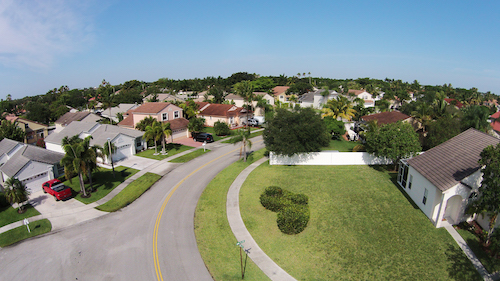The affordable housing crisis facing much of the U.S. today is more like an affordable land crisis. In a city like Miami, the only affordable land available right now is that which is underutilized or vacant. Finding those opportunities is a key challenge for developers, investors and community leaders, but one project out of the University of Miami is demonstrating how it can be solved with technology.
On March 13, the Miami-Dade Beacon Council hosted an event focused on UM’s Miami Housing Solutions Lab, an initiative under the school’s Office of Civic and Community Engagement. The team behind the Housing Solutions Lab just launched a new digital application called the Land Access for Neighborhood Development tool (or LAND) that gives users an easier way to find parcels of land that may be prime development opportunities. It also segments those parcels based on who or what owns the land, whether its a municipal body like a school board or a private owner.
In the process of building and rolling out the LAND application, the UM Housing Solutions team said it found some 500 million square feet of vacant or underutilized land within Miami-Dade County.
“We often talk about the fact that land in Miami-Dade is unaffordable or that we don’t have any land left,” Robin Bachin, director of the CCE, said in an interview with the Miami Herald. “But we do have land. This tool allows us to identify it and shows us exactly where it is and who owns it.”
Much of those 500 million square feet are currently held by public agencies or nonprofit institutions, including Baptist Health, Habitat for Humanity or UM itself. Some parcels are even marked in public databases as “surplus lots,” meaning they aren’t considered useful anymore to the public agencies that still hold them.
The UM team and other housing policy experts say these land parcels present some of the best opportunities for affordable housing development, if only the right developers or agencies could find them. This challenge isn’t unique to Miami — all across the U.S., significant tracts of land remain vacant or underutilized. Projects like those undertaken by the Housing Solutions Lab help identify those areas and their owners. This often leads to a mutually beneficial partnership between landowners, like cash-strapped religious organizations and townships, and developers. It also makes local leaders more accountable, according to Office of Civic and Community Engagement program manager Jorge Damian de la Paz.
“With LAND, you can ask questions you couldn’t ask before,” he said according to the Herald. “Real estate developers already have this data. But now community advocates can directly ask their commissioners ‘Why is this land not being used?’”
You can use the LAND tool and others created by the Miami Housing Solutions Lab here.

